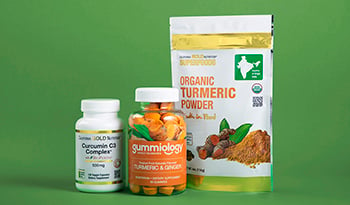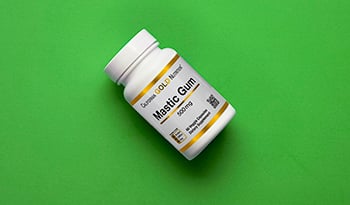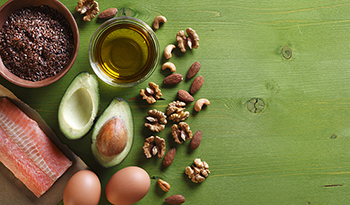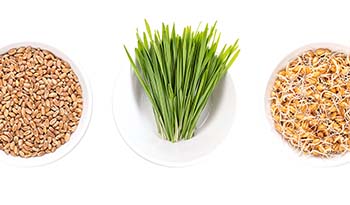The Top 3 Supplement Predictions for 2023 According to a Doctor
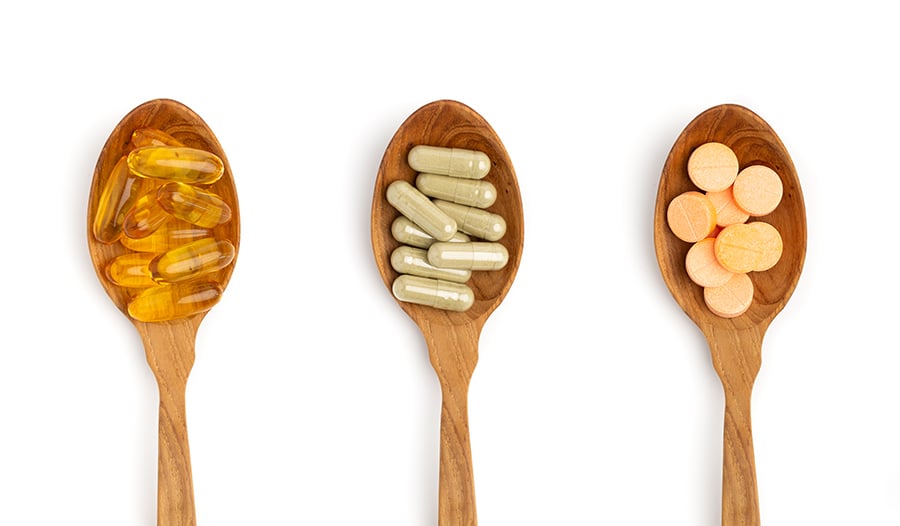
While many quality supplements will be popular in 2023, I regularly recommend the following three staples to my clinic patients as they have shown to have various health benefits.
Let's start with prebiotics and probiotics! Probiotics are healthy bacteria in a capsule and should be part of most people's daily routines. Prebiotics are the foods that probiotic bacteria consume. There are many health benefits that both prebiotics and probiotics can provide, which we will discuss below.
Second, collagen is a protein composed of amino acids—the building block of human life! Ensuring you have enough in your body ensures stronger muscles and healthier skin.
Lastly, omega-3 fatty acids should also be on everyone's list. They positively affect the brain and cardiovascular health and help reduce systemic inflammation.
Probiotics for Gut Health
The gut-brain axis
Do you or someone you know have depression, anxiety, poor memory, or headaches? If so, the gut may be playing a role. I suspect that person also has bloating and digestive issues. Scientists refer to this relationship as the microbiota-gut-brain axis. Essentially, what happens in our gut can affect what occurs in the brain and the rest of our body.
Humans have somewhere between 50-100 trillion gut bacteria. In total, there are about 1,000 different species - collectively known as the "gut microbiome." These bacteria feed on the food one consumes. When we eat, we are not only feeding ourselves but also our bacteria. In addition to consuming healthy dietary habits, one can improve gut health by taking prebiotic and probiotic supplements.
What is the difference between prebiotics and probiotics?
Prebiotics are food for gut bacteria rich in a particular type of carbohydrate called oligosaccharides. Oligo means "a few," and saccharide translates to "sugar." The gut's good bacteria eat these fermentable sugars to help ensure the biodiversity of the gut bacteria. Essentially, oligosaccharides are "food" for the body to make its own probiotics.
Examples of prebiotics include apples, asparagus, bananas, dandelion plants, and chicory root. Many also choose to take a prebiotic supplement to ensure peak gut health.
Probiotics are live cultures of healthy bacteria that come in foods and supplement formulations. The most common strains include Acidophilus, Bifidobacterium, and Lactobacillus. When we feed ourselves, we also feed the trillions of intestinal bacteria. Healthy food encourages the growth of beneficial bacteria, while excess consumption of sugary and processed foods promotes the growth of harmful bacteria, leading to a condition called leaky gut.
Prebiotics and probiotics work synergistically and can be beneficial if antibiotics are taken.
The importance of gut health
The following health conditions have been linked to suboptimal gut health:
- Anxiety and depression
- Inflammatory arthritis/lupus and most auto-immune conditions
- Joint pain and arthritis
- Irritable bowel syndrome (bloating, gas, diarrhea, constipation)
- Migraine headaches
- Fibromyalgia/chronic fatigue syndrome (diffuse muscle aches, brain fog)
- Ulcerative colitis and Crohn's disease (chronic abdominal pain and digestive issues)
Food sources of probiotics
Foods that contain probiotics include yogurt, sauerkraut, kombucha, and kimchi. One serving of yogurt contains about 1 billion live bacteria, so while essential to consume regularly, more is needed to restore the desired gut biodiversity.
Suggested doses
Take prebiotics as recommended on the label. For probiotics, I recommend my patients take a minimum of 5 billion units up to 30 billion units once or twice daily. Doses up to 100 billion are also acceptable, but a person may need to start low and increase over time as tolerated.
Collagen for Muscles and Skin
What is collagen?
Collagen is the most common protein in the body and is the building block of bones, muscle, skin, and cartilage. It serves as a connective tissue and gives our skin integrity and elasticity.
Scientists have identified at least 28 types of collagen. However, 90 percent of the collagen in the human body is Type 1, Type 2, Type 3, and Type 5. I have discussed this in more detail in a previous article.
What does collagen do?
Collagen also helps ensure one's joints have a full range of motion and helps ensure flexibility. Decreased absorption of proteins and the reduced ability of the body's repair mechanisms to rebuild a solid collagen support system results in the destruction of cartilage and tendons, further leading to increased arthritic pain and loss of flexibility.
In addition, collagen provides our skin with elasticity. As we age, we lose this elasticity which is why skin wrinkles and frequently sags over the years. Much of this is due to Ultraviolet (UV) solar damage, toxin exposure, and the additive effect of stress. Those with extra melanin in their skin have a more youthful appearance advantage as they are more protected from ultraviolet sunlight and ultraviolet damage- I refer to this as "melano-protection." Alternatively, those with less melanin are at higher risk for excess solar damage and an increased risk for premature aging.
What does the research say?
Studies show that collagen supplementation has many benefits, which include reduced facial wrinkles and helping to get rid of cellulite in women.
What does the science say? A 2016 study showed that collagen supplementation might be helpful for those with arthritis-related pain. In the study, 39 people were randomly assigned to 1500 mg per day of acetaminophen (paracetamol) or acetaminophen (paracetamol) and Type 2 collagen. The study lasted for three months. Upon completion, those who took the collagen supplement saw "significant improvements compared to baseline." In addition, they had better function and an easier time walking and reported improved quality of life. The authors concluded, "…collagen treatment combined with acetaminophen is superior to only acetaminophen for symptomatic treatment of patients with knee osteoarthritis."
Another study conducted in 2006 stated, "A growing body of evidence provides a rationale for the use of collagen hydrolysate for patients with OA."
Collagen sources
Various collagen manufacturers use different sources for their products. While some use bovine (cow) sources, others use fish. Collagen supplements contain a wide variety of amino acids necessary for hair growth and skin, tendon, and bone health.
Collagen is a good option for those who want to ensure they are getting adequate amino acids but want to consume them using gluten- and dairy-free supplements. Weight lifters frequently use collagen supplementation to ensure they maximize muscle growth. Sometimes they chose whey protein powder also.
Suggested Dosage
There are various formulations of oral collagen supplements available online. Some are of bovine (cow) origin, while others are marine (fish) in origin. I recommend at least 3,000 to 5,000 mg daily. Taking 1,000 to 2,000 mg of vitamin C should also be considered to help optimize collagen strength and production.
Omega-3 Fatty Acids for Brain and Heart Health
Why are omega-3s important?
Omega-3 fatty acids are essential to human health and can be consumed no matter what dietary restrictions a person has. Omega-3 fatty acids, also known as polyunsaturated fatty acids, or PUFAs, play an essential role in cellular function.
They have numerous benefits for the heart, brain, gut, and joints, thanks to resolvins, active metabolites that help reduce inflammation—the primary cause of disease.
Is omega-3 deficiency common?
In 2018, I did a blood test to check my omega-3 levels; I was surprised to learn that my levels were deficient. While I consume fish a few times a month and eat nuts and seeds as snacks, I realized a daily supplement would be needed.
Omega-3 deficiency is more common than most realize. For example, a 2014 Nutrition Journal study showed that most people do not consume enough essential fatty acids. I was proof of this.
What are omega-3s?
Omega-3 essential fatty acids consist primarily of eicosapentaenoic acid (EPA) and docosahexaenoic acid (DHA). These acids are an integral part of cell membranes and help cells to function maximally.
Food sources
These important nutrients exist in a variety of food sources. However, if one's diet is not inclusive, one may quickly find themselves deficient, as I did.
Rich sources of omega-3s include fish (mackerel, cod, and salmon are among the richest), walnuts, chia seeds, flax seeds, hemp seeds, edamame, seaweed, avocado, and natto.
Ensuring your pantry is stocked with these nuts and seeds is important. In addition, an effort should be made to consume fish at least once per week. Low mercury tuna is also a great source of omega-3 fatty acids and can be consumed regularly.
Omega-3 fatty acids include:
- Alpha-linolenic acid (ALA, an omega-3 fatty acid) can be found in flax seeds, walnuts, soy, chia seeds, and hemp seeds.
- Eicosapentaenoic acid (EPA or icosapentaenoic acid) is commonly found in fish oil, krill oil, and eggs (if the chickens were fed EPA).
- Docosahexaenoic acid (DHA, an omega-3 fatty acid) is a significant component of the human brain, skin, and eyes. Although critical, it is not considered "essential" since it can be manufactured when one has an adequate intake of alpha-linolenic acid (ALA).
Omega- 3s and heart disease
Cardiovascular Disease (CVD), or heart disease, is a leading killer of people worldwide. Tobacco use, diabetes, and a poor diet are also major contributors. Fortunately, increasing one's intake of omega-3 fatty acids in the diet and supplementing with them may be beneficial.
Let's consider a 2013 study in the United States, which included 2,837 adults from various ethnicities (whites, Hispanics, African Americans, and Chinese Americans). The test subjects measured their baseline levels of omega-3 fatty acids between 2000 and 2002. They were followed for a decade to evaluate their risk for heart attack and stroke. The authors concluded that "…increased consumption of n‐3 PUFA from seafood may prevent CVD development in a multiethnic population." This study shows the importance of optimizing these fatty acids in the blood.
Omega-3s and brain function
Keeping brain function at peak performance is crucial to long-term success and happiness. Common brain disorders include depression, anxiety, and cognitive impairment/dementia. While it is true that depression and anxiety can be situational- for many, it can also be a lifelong challenge.
A 2001 study showed EPA (essential fatty acids) could help with severe depression. A 2015 study in Integrative Medicine Research[xii] supports the use of omega-3 fish oil in the treatment of depression, while a 2017 study of 38 children with depression and anxiety demonstrated that those with mainly depression symptoms improved when given omega-3 fatty acids. Their anxiety symptoms did not significantly improve in this study.
Secondarily, cognitive decline and dementia are the biggest dilemmas facing our aging world population. As this condition becomes more prevalent, the costs associated with caring for this aging population will rise exponentially. Finding novel approaches to maintain memory and sharpen brain speed is critical. In addition to a healthy diet and exercise, omega-3 fatty acids play a role.
A 2022 study evaluated 2,183 dementia- and stroke-free participants whose average age was 46. The researchers assessed the levels of omega-3 fatty acids in the blood and also measured the size of the brain's hippocampus using MRI imaging. The hippocampus is part of the brain involved in memory formation. The researchers of the study concluded that their study "suggests that higher Omega-3 fatty acid concentrations are related to better brain structure and cognitive function…". Based on this information, ensuring one has adequate omega-3s in the diet, and supplement cupboard plays a vital role in keeping brain function.
Omega-3 fatty acids have also been shown to be helpful for those with ADHD, Arthritis, Asthma, High blood pressure, elevated triglycerides, and migraine headaches.
Suggested dose
Most take between 500 mg to 4,000 mg per day of fish oil. If taking the higher dose, consuming half in the morning and a half in the evening should be considered. There are also vegan options for EPA/DHA available. Fish oil is available in liquid form, capsules, and even gummy formulations. I recommend 1,000 to 4,000 mg daily.
References:
- Yadav MK, Kumari I, Singh B, Sharma KK, Tiwari SK. Probiotics, prebiotics and synbiotics: Safe options for next-generation therapeutics. Appl Microbiol Biotechnol. 2022 Jan;106(2):505-521. doi: 10.1007/s00253-021-11646-8. Epub 2022 January 11. PMID: 35015145; PMCID: PMC8749913.
- Inoue, N., Sugihara, F. and Wang, X. (2016), Ingestion of bioactive collagen hydrolysates enhance facial skin moisture and elasticity and reduce facial ageing signs in a randomised double-blind placebo-controlled clinical study. J. Sci. Food Agric., 96: 4077–4081. doi:10.1002/jsfa.7606.
- Schunck M, Zague V, Oesser S, Proksch E. Dietary Supplementation with Specific Collagen Peptides Has a Body Mass Index-Dependent Beneficial Effect on Cellulite Morphology. Journal of Medicinal Food. 2015;18(12):1340-1348. doi:10.1089/jmf.2015.0022.
- Accessed December 1, 2022 https://www.eajm.org//en/effects-of-native-type-ii-collagen-treatment-on-knee-osteoarthritis-a-randomized-controlled-trial-132887
- Accessed December 2, 2022 https://www.tandfonline.com/doi/abs/10.1185/030079906X148373
- Moro, K., Nagahashi, M., Ramanathan, R., Takabe, K., & Wakai, T. (2016). Resolvins and omega three polyunsaturated fatty acids: Clinical implications in inflammatory diseases and cancer. World Journal of Clinical Cases, 4(7), 155-64
- American Journal of Clinical Nutrition. 2015 Dec;102(6):1357-64. doi: 10.3945/ajcn.115.116384. Epub 2015 November 11.
- Papanikolaou Y, Brooks J, Reider C, Fulgoni VL. U.S. adults are not meeting recommended levels for fish and omega-3 fatty acid intake: results of an analysis using observational data from NHANES 2003–2008. Nutrition Journal. 2014;13:31. doi:10.1186/1475-2891-13-31.
- Circulating and Dietary Omega‐3 and Omega‐6 Polyunsaturated Fatty Acids and Incidence of CVD in the Multi‐Ethnic Study of Atherosclerosis de Oliveira Otto et al. Journal of the American Heart Association, Volume 2, Issue 6. November 2013.
- International Journal of Clinical Practice. 2001 Oct;55(8):560-3.
- Wani AL, Bhat SA, Ara A. Omega-3 fatty acids and the treatment of depression: a review of scientific evidence. Integrative Medical Research. 2015;4(3):132-141.
- Trebatická J, Hradečná Z, Böhmer F, et al. Emulsified omega-3 fatty-acids modulate the symptoms of depressive disorder in children and adolescents: a pilot study. Child Adolescent Psychiatry Mental Health. 2017;11:30. Published 2017 July 5. doi:10.1186/s13034-017-0167-2.
- Association of Red Blood Cell Omega-3 Fatty Acids With MRI Markers and Cognitive Function in Midlife: The Framingham Heart Study Claudia L. Satizabal, Jayandra Jung Himali, Alexa S. Beiser, Vasan Ramachandran, Debora Melo van Lent, Dibya Himali, Hugo J. Aparicio, Pauline Maillard, Charles S. DeCarli, William Harris, Sudha Seshadri Neurology Oct 2022
DISCLAIMER:This Wellness Hub does not intend to provide diagnosis...













































































 Table of Contents
Table of Contents



